Ukraine’s power companies report highest net revenues in 2024
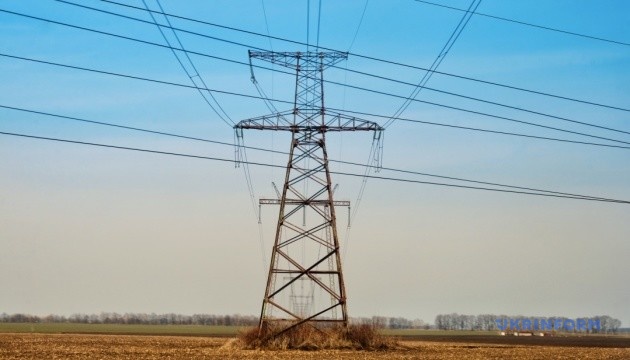

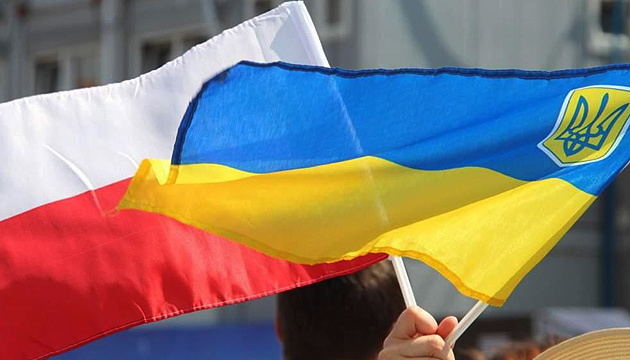


On 21 July 2025, Ukraine’s Security Service made dramatic claims: the country’s top anti-corruption agencies were plagued with Russian infiltrators. Simply devastating during wartime—Russian spies had penetrated the National Anti-Corruption Bureau and Specialized Anti-Corruption Prosecutor’s Office, threatening national security at its core.
The next day, parliament rushed through Law No. 12414, bringing both agencies under control of the prosecutor general. Despite protests flaring across Ukrainian cities, Zelenskyy promptly signed the legislation. “The anti-corruption infrastructure will work, NABU and SAPO will work,” Zelenskyy declared that evening, “but without Russian influences that had to be removed.”
Nobody explained how unprecedented prosecutorial control over independent bodies would decrease supposed Russian control within them.
But here’s the greatest catch: nearly all claims of Russian influence appear to fall apart under scrutiny, according to Ukrainska Pravda’s latest investigation.
The justification for dismantling a decade of anti-corruption infrastructure? It’s crumbling two weeks later.
Ukrainska Pravda’s investigation reveals how surprisingly weak the actual proof remains. The outlet interviewed multiple sources to examine what investigators actually found versus what they claimed.
The case against Viktor Gusarov centers on allegations he provided classified information to a former Yanukovych-era security official while working in NABU’s elite D-2 unit. The Security Service claims to have documented “at least 60 instances” of information transfer to Russian intelligence.
But when NABU requested evidence about Gusarov’s alleged crimes in July, “they haven’t received an answer to this day,” Ukrainska Pravda reports.
The investigation into Ruslan Magamedrasulov involves his family’s hemp business, which the Security Service alleges was used for illegal exports to Russia. Authorities arrested over 100 tons of technical hemp they claimed was “ready for shipment to Dagestan.”
Olena Shcherban, Magamedrasulov’s lawyer, told Ukrainska Pravda the hemp business was entirely legal—producing tea, oils, and dietary supplements sold only within Ukraine. She suspects the Security Service’s audio recordings were “glued together from cuts of different conversations” and plans to request the original recordings.
Several targeted NABU employees faced searches simply for having relatives in occupied territories with Russian passports—a situation affecting millions of Ukrainian families divided by Russia’s 2014 invasion.

Here’s what actually happened: the operation focused on investigators handling cases involving Zelenskyy’s inner circle.
Magamedrasulov “participated in documenting the activities” of Timur Mindich, Zelenskyy’s business partner from Kvartal-95 studio. Sources told Ukrainska Pravda the targeting of regional NABU leadership was specifically connected to the Mindich case.
Detective Ivan Kravchuk was handling the case against former Agriculture Minister Mykola Solskyy, who was forced to resign due to NABU’s investigation.
Detective Oleksandr Skomar was running the case against former Deputy Prime Minister Oleksiy Chernyshov—Zelenskyy’s birthday party guest during COVID lockdown.

And here’s where the pieces connect: Prosecutor General Ruslan Kravchenko’s priority task, appointed just one month before the operation, was to neutralize NABU’s case against Chernyshov, according to Ukrainska Pravda’s earlier reporting.
The pattern becomes clear when examining who faced the heaviest scrutiny—not abstract security threats, but investigators probing the president’s personal network.
Even within the Security Service, doubts emerged.
“Sources in several law enforcement agencies emphasize that doubts exist within the Security Service itself not only regarding such verdicts, but also the validity of such suspicions,” Ukrainska Pravda reports.
Most tellingly, sources said anti-corruption agency leaders demanded Zelenskyy either “publicly justify the Security Service’s actions and accusations, or release the employees.”
The weak evidence helps explain why the operation became the final straw for international partners. The European Union froze $1.7 billion in aid immediately after the controversial law passed, with another $3.8 billion hanging in the balance.
For Brussels, this wasn’t just about one law. European officials had already flagged structural problems with Ukraine’s anti-corruption policy during an 11 July 2025 subcommittee meeting, weeks before the controversial legislation.
What Ukrainian authorities didn’t anticipate was civil society’s strength. Within hours of the law passing, mass demonstrations erupted across Kyiv, Lviv, Dnipro, and Odesa—the largest protests since Russia’s invasion began.
Teenagers and young adults led chants, organizing through social media, holding signs comparing Zelenskyy to fugitive dictator Viktor Yanukovych. A generation that grew up after Euromaidan was showing that Ukraine’s democratic transformation had become irreversible.
After 10 days of street pressure and international condemnation, parliament voted 331-0 to restore anti-corruption agency independence on 31 July.
The anti-corruption operation wasn’t isolated. Even after July’s retreat, the administration continued efforts to control oversight bodies through other means.
Ukraine’s Cabinet finally appointed Oleksandr Tsyvinskyi as director of the Bureau of Economic Security on 6 August 2025, ending weeks of obstruction that risked $2.3 billion in IMF funding. Tsyvinskyi had won the official selection process unanimously in July, but the appointment stalled amid unsubstantiated security concerns about his Russian-born father—the same playbook used against other qualified investigators.
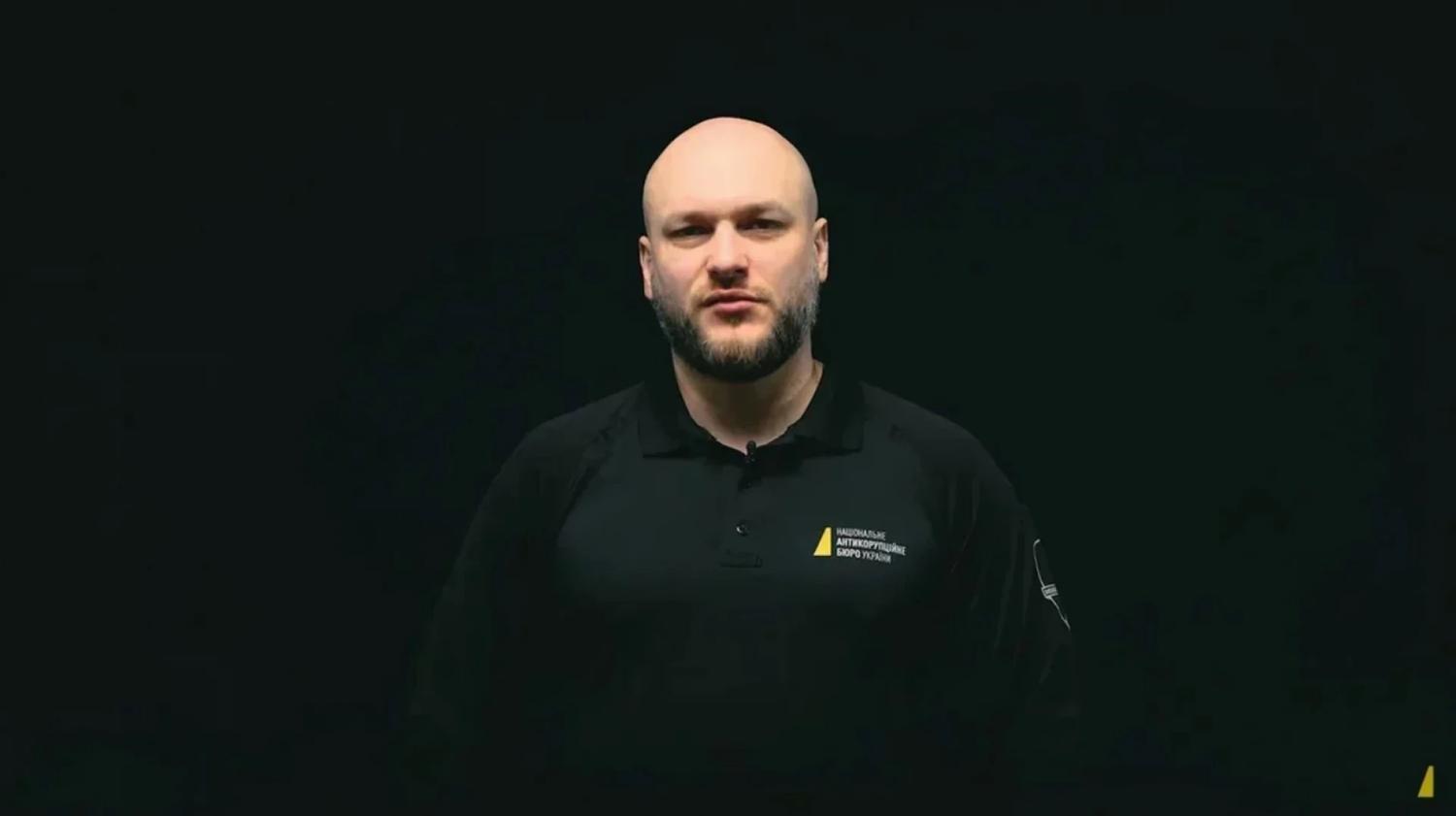
The investigation takes on added significance given Ukrainska Pravda’s own pressure campaign. Editor-in-chief Sevgil Musayeva told The Times that advertising revenue dropped sharply after the President’s Office allegedly asked companies to boycott the publication.
According to Forbes Ukraine, the outlet lost $240,000 in advertising revenue due to this pressure.
Ukrainska Pravda first reported systematic pressure from the President’s Office in October 2024, just months after investigating corruption cases involving Zelenskyy’s inner circle.

Ukrainska Pravda’s investigation confirms what many suspected: dramatic claims of Russian infiltration provided convenient cover for an attempt to destroy institutional independence. The evidence for that infiltration remains conspicuously absent.
Two NABU detectives remain imprisoned on charges the investigation suggests may lack substance. The episode demonstrated Ukrainian democratic culture’s resilience, but also showed how easily security services can be weaponized when investigations reach the wrong people.
For now, civil society has successfully resisted institutional capture. The protests forced parliament to restore anti-corruption agency independence. International pressure secured Tsyvinskyi’s appointment, demonstrating that merit-based selections can prevail.
But vigilance remains essential. The President’s Office has demonstrated its willingness to take drastic measures to protect Zelenskyy’s inner circle—using fabricated security concerns, weaponizing law enforcement, and pressuring media outlets.
The successful resistance offers hope that Ukraine’s democratic institutions can withstand authoritarian pressure. But it also serves as a warning: when corruption investigations reach the very top, the defenders won’t hesitate to destroy the institutions themselves.
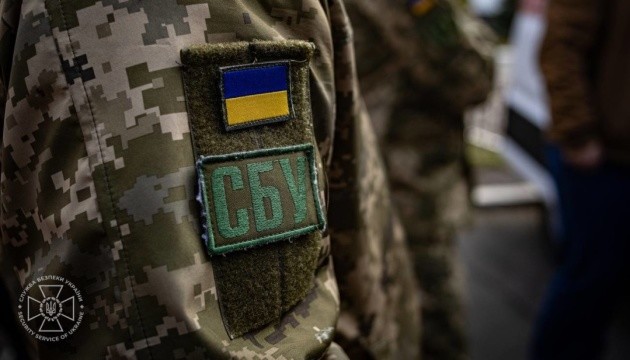
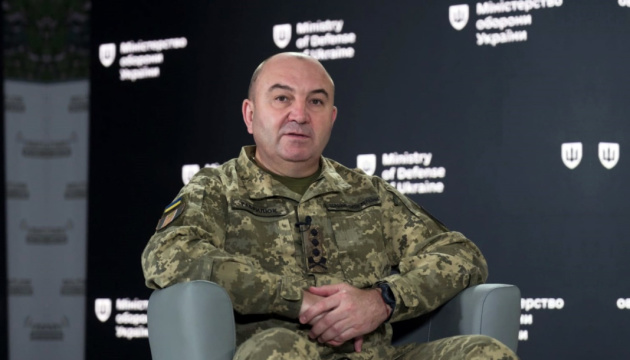
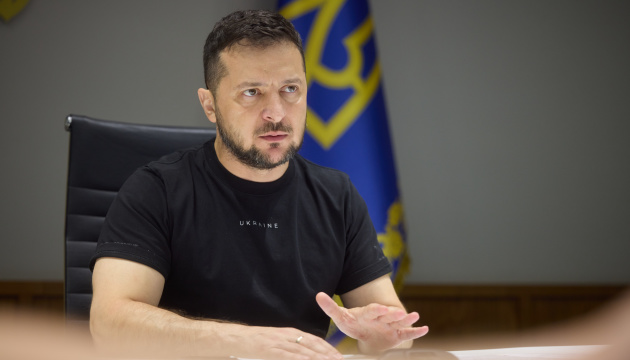
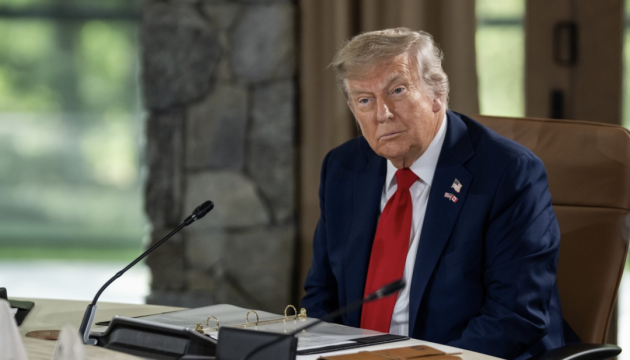
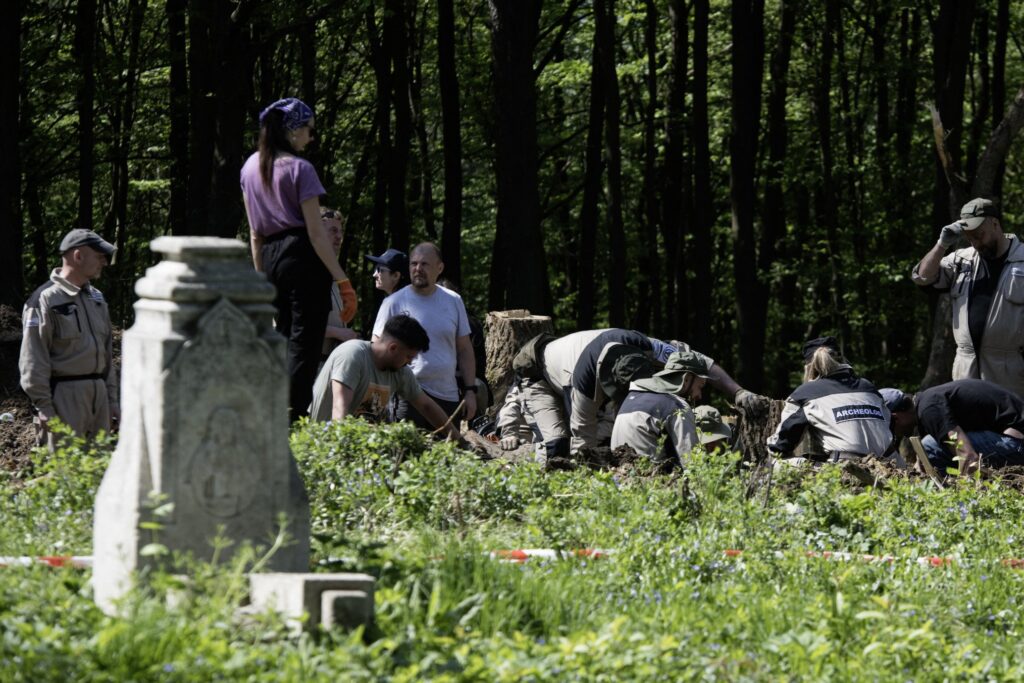
Ukraine plans to begin search and exhumation operations on Polish territory in September, Deputy Minister of Culture and Strategic Communications Andriy Nadzihos announced.
The cross-border initiative represents ongoing efforts by both countries to address historical wounds from World War II, when Polish and Ukrainian civilians were killed in ethnic violence in territories that are now part of western Ukraine.
“We are preparing to start search and exhumation work on Polish territory in September – in the village of Yurechkova,” Nadzihos told Ukrinform. “We plan to make a preparatory trip there in mid-August, and in September – to start excavations. We want to make it before the start of the rainy season.”
The announcement marks a reciprocal step in Polish-Ukrainian cooperation on historical reconciliation. Poland has provided Ukraine with 13 locations for conducting such work, while Ukraine has offered four locations to the Polish side, according to Nadzihos.
The September operations will follow exhumation work that began in Lviv in early June, when a Polish-Ukrainian team started searching for Polish military personnel killed at the beginning of World War II. Ukraine granted permission to Poland for exhumation work on the former territory of Zboyiska village, now within Lviv city limits, the Ministry of Culture reported in June.
Polish Foreign Minister Radosław Sikorski recently indicated that exhumation work “should soon begin in this and one other locality.”


According to aviation expert Tom Cooper, the Russian air force began Russia’s wider war on Ukraine in February 2022 with potentially just seven active Beriev A-50Us—four-engine Ilyushin Il-76 airlifters with radar radomes on their fuselages and stations for up to 15 crew and battle-managers.
In the aftermath of the 1 June Operation Spider Web—coordinated strikes on five Russian air force bases by short-range attack drones that the Ukrainian state security service, or SBU, smuggled near the bases in hijacked long-haul trucks—the Russians may be down to just four flyable A-50Us. Five if they managed to repair one of the radar planes the Ukrainians damaged in a February 2023 drone attack.
The analysts at AviVector, which scrutinizes satellite imagery of Russian air bases, may have spotted one of them. But this A-50U isn’t anywhere near Ukraine. Instead, it’s staging from Vorkuta air base in northern Russia, 2,400 km from Ukraine.
“The A-50U airborne early warning aircraft arrived in June and is likely conducting missions over northern Russia, escorted by MiG-31BM interceptors,” AviVector reported.
— AviVector (@avivector) August 3, 2025
Satellite images of
Vorkuta Airfield as of August 2, 06:58 UTC
The airbase housed 1 A-50U (Mainstay), 1 Tu-134UBL (Crusty), and 3 MiG-31 (Foxhound).
The A-50U airborne early warning aircraft arrived in June and is likely conducting missions over northern Russia, escorted… pic.twitter.com/z1p6vwVZrR
The A-50U, like the US Air Force’s Boeing E-3, flies behind the front line in order to scan the horizon for enemy aircraft and missiles. Soaring high above the ground cover and capable of repositioning as needed, the A-50Us have helped Russian commanders to keep an eye on the Ukrainian air force—and to detect, minutes in advance, incoming Ukrainian missiles and drones.
If there are four operational A-50Us and one is in northern Russia, it’s possible no more than two are within reach of Ukraine—and useful for Russia’s defensive effort against Ukrainian deep strikes. Analysts have long assumed at least one of the radar planes is in the Russian Far East for patrols along Russia’s eastern waters and its border with China.
Two A-50Us aren’t terribly useful, given that it takes at least three of the lumbering planes to maintain anything approaching around-the-clock coverage of a given area for even a limited span of time.
Early in Russia’s 42-month wider war on Ukraine, the A-50Us “flew an average of two–three sorties per day, providing higher-resolution early-warning and vector information” in southern and eastern Ukraine, Justin Bronk, Jack Watling and Nick Reynolds wrote in a November 2022 report for the Royal United Services Institute in London.
That was possible because the Russian air force had nine A-50Us prior the wider Russian invasion of Ukraine in February 2022. Now it has many fewer. The radar coverage Russian forces enjoyed in 2022 is no longer possible.

A Ukrainian drone damaged an A-50U on the ground in Belarus in February 2023. In January 2024, a long-range Ukrainian missile—reportedly a US-made Patriot—shot down an A-50U over the Sea of Azov in southern Ukraine. Six weeks later in February 2024, another Ukrainian missile, an ex-Soviet S-200, struck a third A-50U in the same area.
The Russian air force swiftly grounded its surviving A-50Us and scrambled to replace the two or three lost planes. That meant cycling at least one older and possibly unflyable A-50U—out of several dozen Beriev built in the 1980s—through Beriev’s Aviation Scientific and Technical Complex in the city of Taganrog, on the Azov Sea coast just 130 km from the front line.
So of course the Ukrainians promptly droned the Taganrog factory the following month.
The Kremlin reportedly canceled the effort to replace the A-50U with newer A-100 radar planes back in June. The upshot is that, by this spring, the Russian air force may have been down to five or fewer active A-50s—with no clear plan for complementing or replacing them.
And then, on 1 June, the SBU smuggled more than 100 short-range attack drones into Russia in modified truck trailers. The drones targeted Dyagilevo, Ivanovo, Olenya, Belaya and Ukrainka air bases. Ivanovo, 750 km from Ukraine, is the home base for the entire A-50U fleet, including active and derelict airframes.
Post-raid satellite imagery of Ivanovo depicted at least one suspicious pile of wreckage as well as a possibly scorched A-50. The imagery may point to one or more destroyed or damaged A-50U, but AviVector for one concluded the affected airframes were already derelict. At best, they were useful as sources of spare parts for the active A-50Us.
In any event, the A-50U fleet is still in very bad shape. Its few surviving jets are apparently scattered far and wide from northern Russia to the Russian Far East, leaving at most three—and potentially just two—for flights supporting the war in Ukraine.
For the Ukrainians, that’s an opportunity: to exploit gaps in Russian air-defenses … and launch more missiles and drones at targets inside Russia.
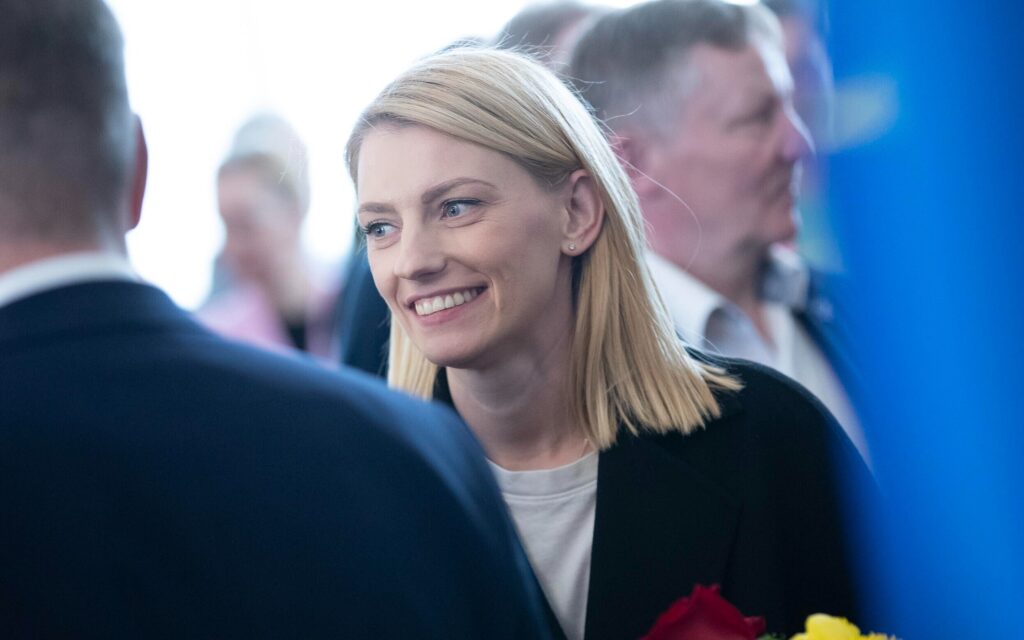
Estonian NGO fraud is now at the center of a criminal case, ERR reports. Estonia’s Prosecutor General has charged Johanna-Maria Lehtme, co-founder of the NGO Slava Ukraini (“Glory to Ukraine”), with large-scale embezzlement and breach of trust, ERR reported. The indictment claims she approved unjustified contracts worth over €450,000, diverting donation funds intended for Ukraine’s war relief.
Johanna-Maria Lehtme gained national and international acclaim for launching Slava Ukraini in 2022. She received Estonia’s European of the Year award and was elected to parliament with the Eesti 200 party in 2023. She stepped down from politics after the allegations emerged. The charity officially ended operations in October 2024 after public donations ceased. Newspaper Eesti Ekspress also reported that Lehtme had faced embezzlement allegations in an earlier professional role.
According to the indictment, Slava Ukraini initially worked with the Ukrainian NGO All For Victory to provide humanitarian aid, ERR reported. In August 2022, Lehtme allegedly shifted operations to IC Construction, a Ukrainian company linked to All For Victory but able to add markups and issue invoices. Prosecutors say she signed loss-making contracts and paid inflated bills submitted by IC Construction, causing over €413,000 in damages.
One contract from that period involved a €44,500 payment to All For Victory for transporting aid from Estonia to Ukraine. Investigators found that IC Construction was paid separately for the same service, although it never performed any logistics work. The funds, prosecutors say, were instead used to cover operational costs and salaries at All For Victory. Lehtme allegedly approved this despite her duty not to harm the charity’s financial standing.
The Ukrainian NGO involved, All For Victory, had already been linked to misuse of humanitarian funds. Lviv Portal reported in February that its director, former Lviv deputy mayor Hennadii Vaskiv, was suspected of embezzling over 18 million UAH or €373,000 from donations received via Slava Ukraini. His firm, IC Construction, allegedly provided overpriced services and routed profits through a limited liability scheme. Ukrainian courts later froze his property, although procedural issues prevented him from being formally charged.
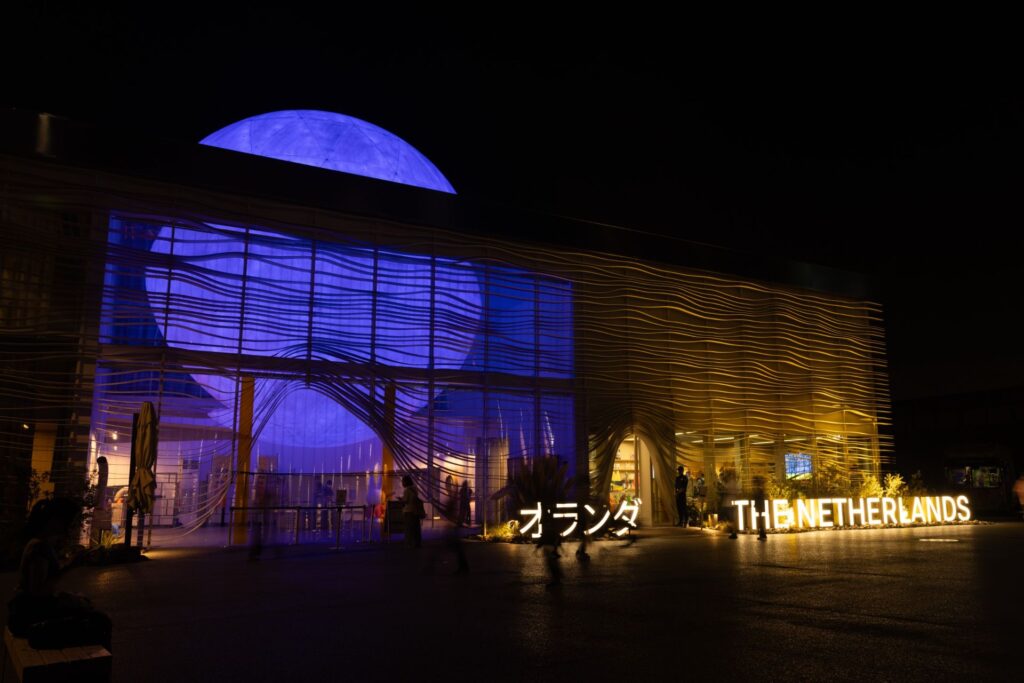
Ukraine celebrated its National Day at EXPO 2025 in Osaka on 5 August, dedicating the event to partners and allies supporting the country, the Ukrainian pavilion team at EXPO 2025 told Ukrainska Pravda.
EXPO 2025 opened in Osaka on April 13 with the theme “Designing Future Society for Our Lives,” featuring over 160 countries and organizations until October 13. Japan provided Ukraine free exhibition space.
More than 15 participating countries joined the organization of the event, according to the report. The team continued the main concept of the Ukrainian pavilion “Not For Sale,” which tells about Ukrainian society’s values.
The pavilion added five new exhibits to its “things not for sale” collection under the title “Imported Goods.” These artifacts honor cultural figures and activists from Japan, Great Britain, Germany, and Canada who demonstrate solidarity with Ukraine.
Musician and composer Mariana Klochko presented the “Ode of Gratitude” – a musical composition created specifically for Ukraine’s National Day in collaboration with creative agency Bickerstaff.734. The music combines sounds from allied countries, layering them to create “an image of solidarity’s common sound.” The band ONUKA also performed at the event.

The National Day began with an official opening ceremony attended by over 500 guests. Ukraine received greetings from Japan’s highest government representatives: Yuichiro Koga, State Minister in the Cabinet of Ministers of Japan and Minister of Economy, Trade and Industry of Japan; Eisuke Mori, Chairman of the Japan-Ukraine Parliamentary Friendship League; and Koji Haneda, General Commissioner of the World Exhibition EXPO 2025 in Japan.
The Czech pavilion hosted a panel discussion titled “Ukraine Unbreakable Classrooms,” organized by the public organization “Osvitoria.” The event focused on learning resilience during wartime and international support for Ukraine’s educational system. The discussion was accompanied by excerpts from the documentary film “Tape of Time” by director Kateryna Gornostay, followed by a performance by the band KAZKA.
An immersive exhibition “Home Beyond the Dawn” opened at the Romanian pavilion under the curation of Natalia Matsenko. The exhibition unites works by over 30 contemporary Ukrainian artists exploring the transformation of the concept of “home” during war.
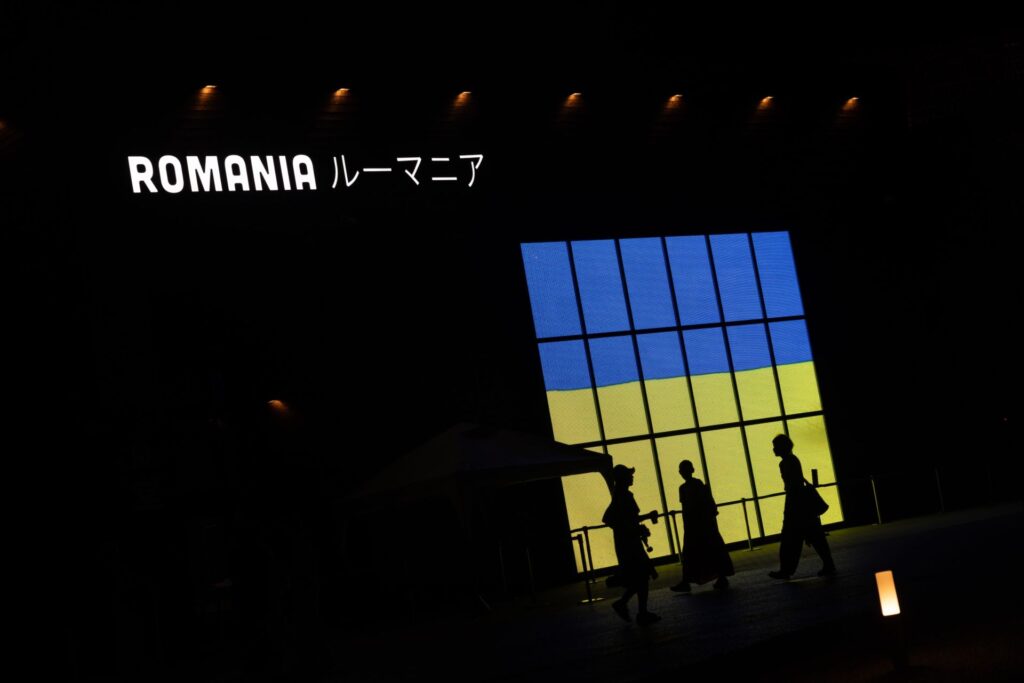
The Belgian pavilion initiated panel discussions on art and its role in contemporary realities, bringing together Ukrainian female artists who shared their experiences.
The ceremonial conclusion of Ukraine’s National Day featured an official reception with a menu specially developed by Ukrainian chef Yevhen Klopotenko. In solidarity, friendly pavilions illuminated their facades in Ukrainian flag colors and raised yellow and blue flags.
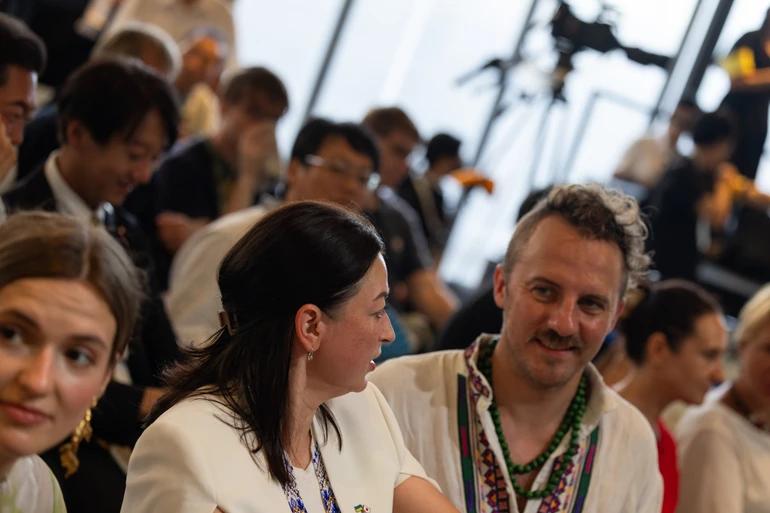
Ukraine’s pavilion “Not For Sale” will continue operating until 13 October.
World Exhibitions began in London’s Crystal Palace in 1851, drawing over 6 million visitors to showcase Industrial Revolution achievements. Today they serve as platforms for demonstrating global technological innovations.
This cuts the original from 115 words to 54 words while preserving the essential information: current EXPO dates and theme, participation numbers, Japan’s support for Ukraine, historical context, and the exhibition’s purpose.
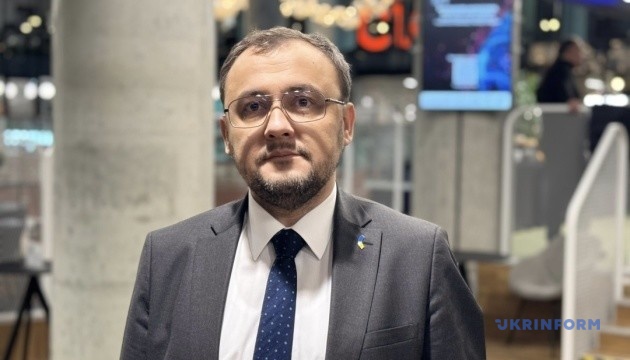
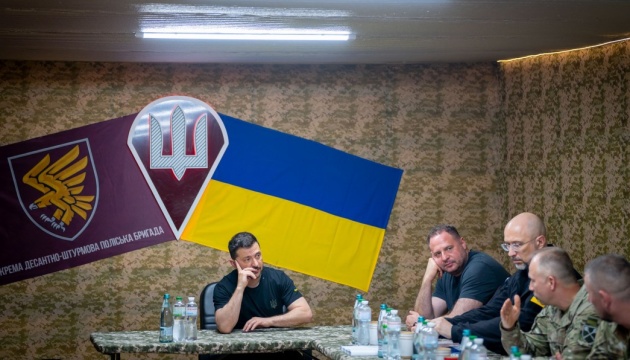
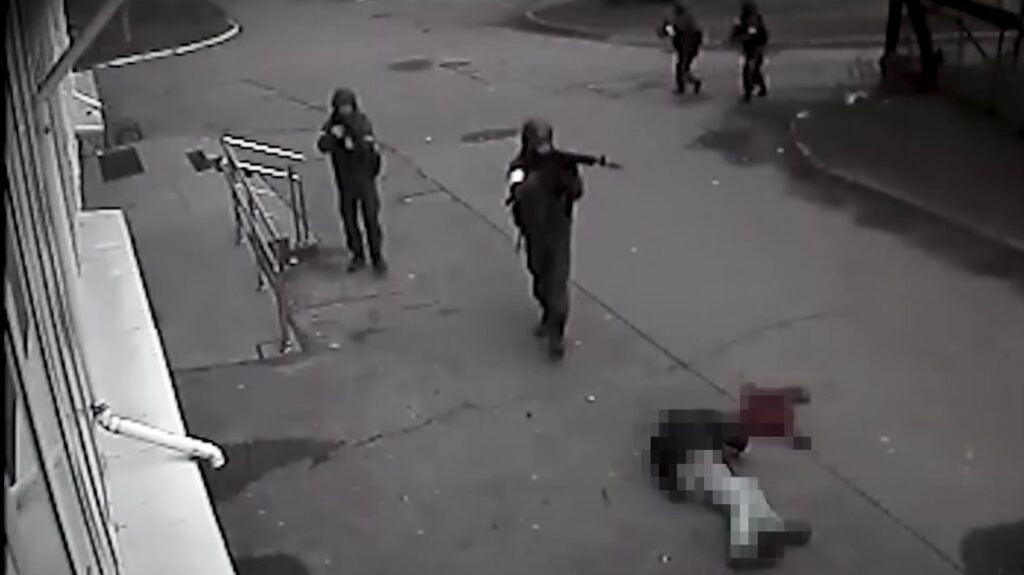
Radio Svoboda journalists have released previously unseen surveillance camera footage documenting the killing of 70-year-old Bucha resident Volodymyr Rubailo by Russian military personnel on Yablunska Street on 4 March 2022.
The video recordings, published by Radio Liberty on 6 August, show Russian soldiers first wounding Volodymyr Rubailo with an initial shot, then executing him with a targeted shot to the head while the civilian man could barely stand on his feet. Shortly after, Russian military personnel began systematically looting a grocery supermarket near Rubailo’s body, which remained on the ground throughout the incident.
“They broke the glass and went inside. They put the stolen goods in baskets and bags and loaded them onto armored vehicles. To take more, some filled shopping carts and wheeled them down the street to the houses of Bucha residents they had just captured,” Radio Svoboda journalists reported.
The publication previously reported that Russian paratroopers from the 234th Airborne Assault Regiment from Pskov may be involved in Rubailo’s murder, specifically a group led by Sergeant Vladimir Borzunov. Radio Svoboda established that his unit was positioned at the location from which, according to Ukrainian ballistics experts, the shots were fired at the Bucha civilian.
In a telephone conversation with a Radio Svoboda correspondent, Sergeant Borzunov confirmed that Russian military personnel killed Rubailo but denied his involvement and that of his subordinates in the civilian’s murder.
On 24 June, law enforcement officials identified three additional Russian military personnel involved in the killings of civilians during the temporary occupation of part of Kyiv Oblast. On 3 July, prosecutors sent the cases of four Russian servicemen accused of shooting civilians in Bucha to court.
Bucha remained under occupation for 33 days. Russian military forces with heavy equipment entered Bucha on the morning of 27 February 2022. That same day, a missile hit a residential building, and mayor Anatoly Fedoruk reported the first casualties.
Russian forces left the city on 31 March 2022. On the evening of 2 April, the Ministry of Defense officially announced that all settlements in Kyiv Oblast had been liberated from Russian military forces.
When journalists and Ukrainian military personnel reached the city after Bucha’s liberation, they discovered evidence of mass killings. Some bodies were found on the streets, others with hands tied behind their backs. Ukraine officially called on the world to join the investigation into the murders of civilians in Bucha. On 14 April 2024, International Criminal Court Prosecutor Karim Khan personally visited Bucha.
On 8 April 2022, authorities began exhuming bodies from a mass grave near the Church of St. Andrew the First-Called and All Saints in Bucha to identify the victims and establish the circumstances of their deaths. Private American company Maxar Technologies reported that the first signs of the mass grave near the church were captured in satellite images on 10 March 2022.
Law enforcement officials have documented over 9,000 war crimes committed by the Russian army during the occupation of the Bucha district in Kyiv Oblast. More than 1,700 civilians died. During 2022 alone, law enforcement managed to identify 91 Russian military personnel who committed war crimes. The Armed Forces of Ukraine reported they had eliminated Russian soldiers who tortured civilians in Bucha.
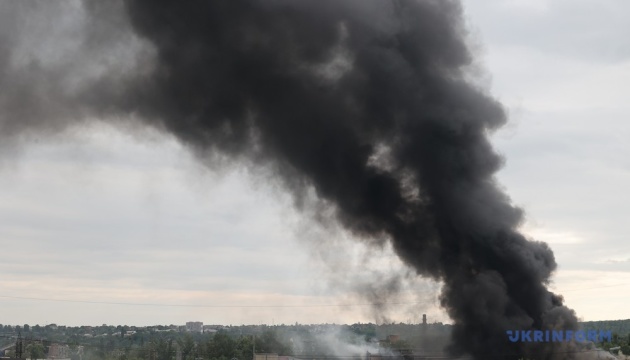
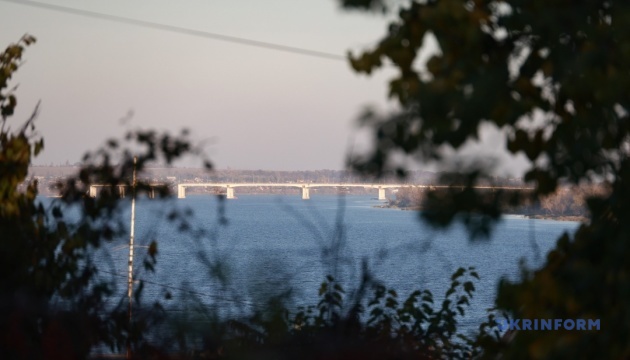

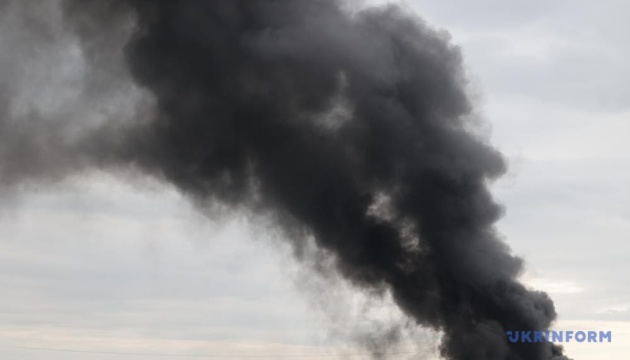
Editorial: Despite no immediate sign of a breakthrough with Moscow after special envoy Steve Witkoff’s crunch ceasefire talks, there is at least hope that the US president – increasingly resentful about the Kremlin rebuffing his overtures – could now come full circle and support Ukraine again

© Sputnik

© Copyright 2022 The Associated Press. All rights reserved
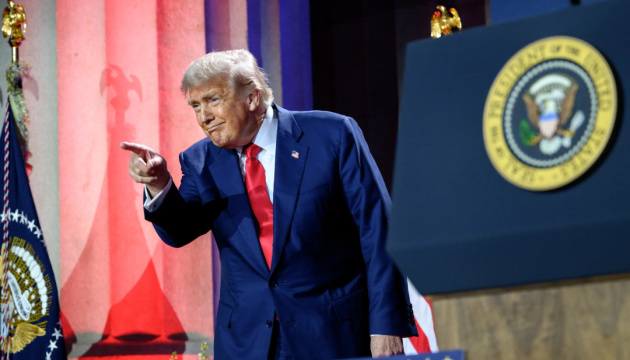
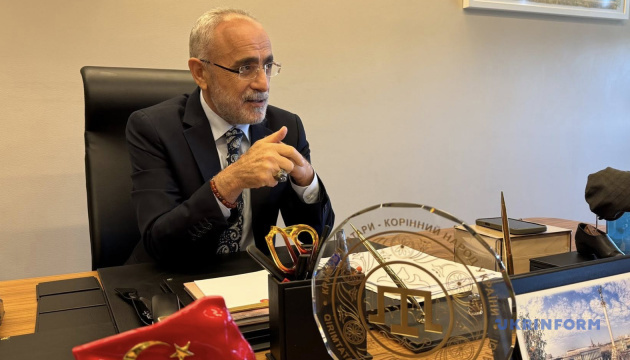
Steve Witkoff and Vladimir Putin met for about three hours in a last-minute bid to seek a breakthrough in the three-and-a-half-year war

© Sputnik
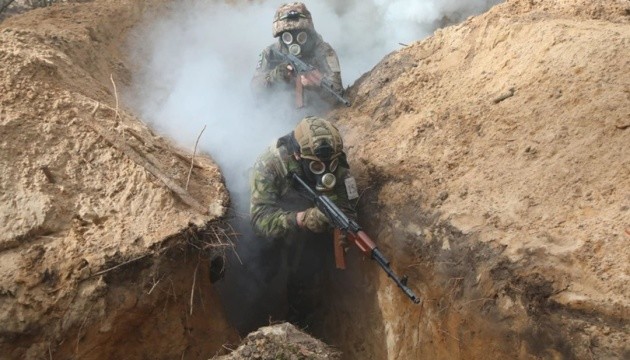
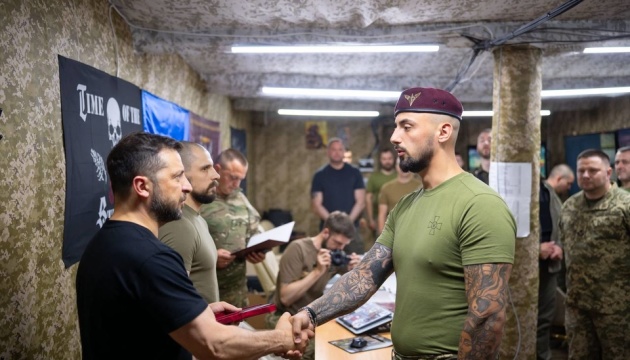

© Sputnik
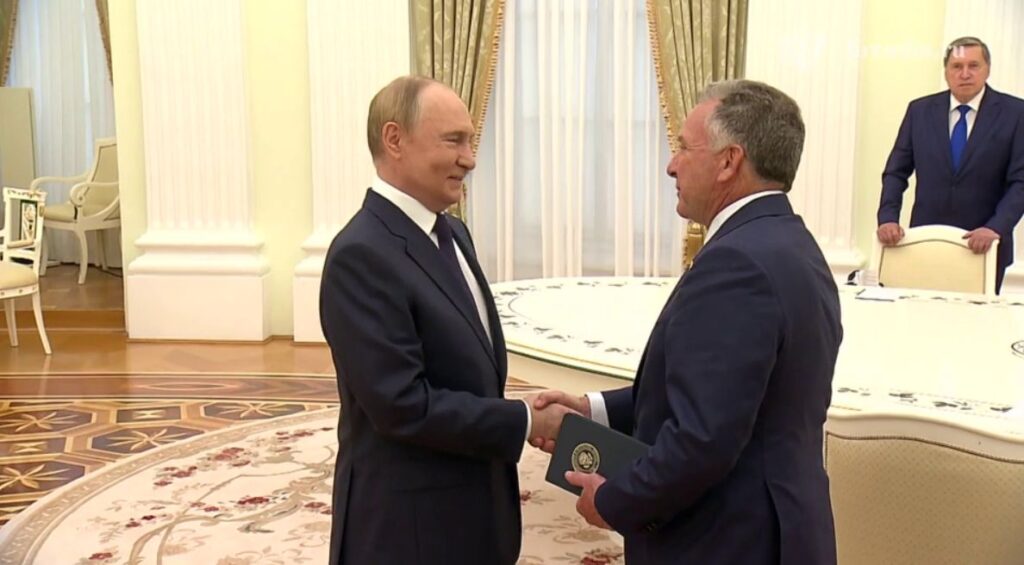
Vladimir Putin held three-hour talks with US envoy Steve Witkoff on Wednesday, but produced no full ceasefire agreement, prompting the American president to immediately impose a 25% tariff on India for buying Russian oil.
The tariff hike – pushing total US levies against India to 50% – signals Trump is following through on his threat to target countries financing Russia’s war machine, just two days before his August 8 ultimatum deadline.
Putin’s decision to avoid a full ceasefire comes as the Kremlin faces mounting economic pressure. Russian oil revenues have already dropped by nearly 33%, Bloomberg reports, but Moscow appears willing to risk deeper isolation while pursuing its goal of capturing four Ukrainian oblasts completely, according to Reuters sources familiar with Putin’s thinking.
Russian presidential aide Yuri Ushakov described the three-hour talks as “very useful and constructive,” saying Putin conveyed “some signals” on Ukraine while Witkoff delivered “relevant signals” from Trump. However, Ushakov refused to disclose details, explaining Trump had not yet been briefed on the outcome.
Before the meeting, Bloomberg reported the Kremlin was weighing a partial moratorium on air strikes as a potential concession to avoid sanctions.
Hours after the Moscow meeting concluded, Trump signed an executive order imposing the additional 25% tariff on Indian goods, citing India’s role as Russia’s second-largest oil customer after China.
“I find that the Government of India is currently directly or indirectly importing Russian Federation oil,” Trump’s executive order states, adding that India accounts for roughly 35% of its oil supplies from Russia.
India responded, calling the tariffs “extremely unfortunate” and “unfair, unjustified and unreasonable.” New Delhi said its oil purchases are “based on market factors” aimed at ensuring “energy security of 1.4 billion people.”
The stakes escalated further after Russian Security Council deputy chairman Dmitry Medvedev framed Trump’s ultimatum as “a threat and a step towards war,” prompting Trump to order two nuclear submarines to “appropriate regions” citing “highly provocative statements.”
However, Ukrainian parliament foreign affairs committee chair Oleksandr Merezhko told ABC News he doesn’t expect Trump to impose promised secondary sanctions on China – Russia’s largest energy customer – even if Putin maintains his refusal.
With Trump’s Friday deadline looming, the White House faces pressure to implement the full sanctions framework targeting both Russia and countries purchasing Russian energy. Trump has threatened “secondary tariffs” that could fundamentally reshape global energy markets.
The immediate action against India suggests Trump intends to follow through on his threats, potentially setting up a confrontation with China if Beijing continues buying Russian oil after Friday’s deadline expires.
Trump’s focus on India over China may reflect strategic calculations about which pressure points offer the most leverage.
As The Telegraph recently noted, India — not China — could be the key to ending the Ukraine war, despite buying less Russian oil than Beijing. India’s Russian oil imports surged from near-zero pre-war to 2.15 million barrels per day by mid-2023, generating $51 billion in revenues for Russia last year alone.
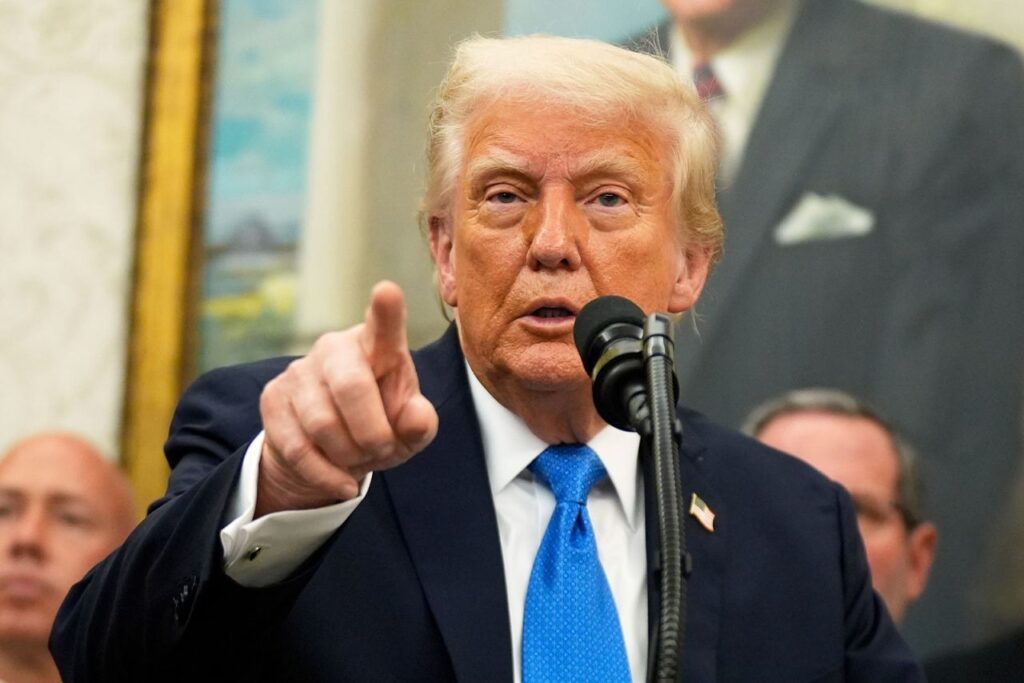
US President Donald Trump is currently speaking by phone with Ukrainian President Volodymyr Zelenskyy, multiple sources report. The call comes at a critical moment in ongoing US diplomatic efforts related to the war in Ukraine.
The call follows a meeting in Moscow between Trump’s special envoy, Steve Witkoff, and Russian President Vladimir Putin. This marked Witkoff’s fifth meeting with Putin at the Kremlin. According to the Kremlin, the discussion was “very useful and constructive.”
Trump had earlier issued an ultimatum to the Kremlin, warning that if progress toward peace was not made, the US would impose devastating new sanctions on Russia by 8 August. This adds weight to both the Moscow talks and today’s Trump–Zelenskyy conversation.
Witkoff is now returning to Washington, D.C.
US Secretary of State Marco Rubio has indicated that new statements may be made soon regarding possible sanctions against Russia. He confirmed speaking with Witkoff following the envoy’s return from Moscow.
“We’ll have more to say about that later on today,” Rubio told reporters. “It could be positive news — or not,” he added.
Rubio’s remarks signal that decisions on sanctions may depend on the outcomes of the Trump-Zelenskyy call and Witkoff’s diplomatic efforts.
According to White House correspondent Reena Bhardwaj, President Trump is scheduled to deliver remarks from the Oval Office at 4:30 p.m. local time on 6 August. The statement will follow Witkoff’s return from Moscow and is expected to address the outcome of his meeting with Putin.
The timing of the address—just two days before Trump’s 8 August ceasefire ultimatum—highlights the significance of the moment. The content of the statement has not yet been disclosed.
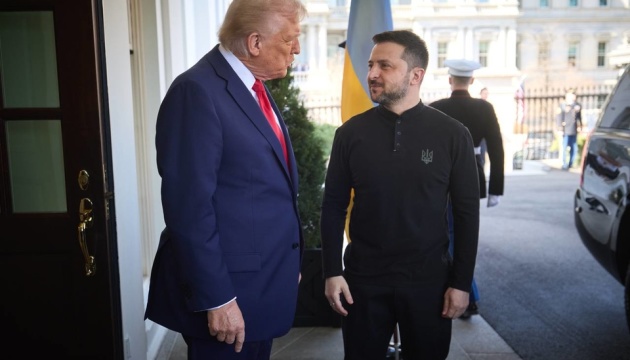
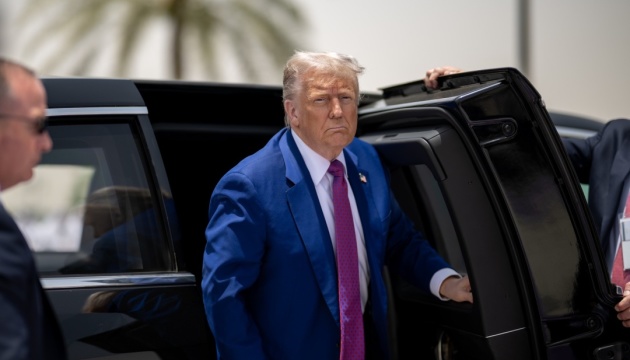

The first shipments of US-manufactured weapons and ammunition to Ukraine under NATO’s Prioritized Ukraine Requirements List (PURL) will arrive in the coming weeks, a NATO official told European Pravda on condition of anonymity.
Launched by NATO and the United States, PURL is a new funding mechanism that allows Alliance members to finance US weapons for Ukraine. The initiative is seen as a major evolution in how Western military assistance is structured.
The first two PURL assistance packages were financed by:
“New aid packages are being prepared quickly and on a regular basis,” the NATO official said. “We expect the first deliveries within weeks.”
According to NATO, more countries are set to join PURL soon. At a recent meeting of the Ukraine Defense Contact Group — the Ramstein-format coalition of over 50 countries — seven states expressed interest in funding US weapon purchases for Ukraine. Among them: Canada, Belgium, Germany, the Netherlands, and several Nordic nations.
One of Ukraine’s most urgent challenges is how quickly weapons can be delivered. European nations are expected to send 2 million 155mm artillery shells this year.
With Western-backed domestic production ramping up inside Ukraine, this could partially compensate for declining US munitions exports.
However, air defense is a different story. Ukraine still urgently needs US-made Patriot surface-to-air missiles, which have no fast European substitute.
France and Italy have delivered SAMP/T systems, but deployment and production are slower — and questions remain about their effectiveness compared to Patriot.
Germany has pledged two more Patriot systems, but it’s unclear where additional units will come from. Other European operators of Patriots are hesitant to reduce their own air defenses.
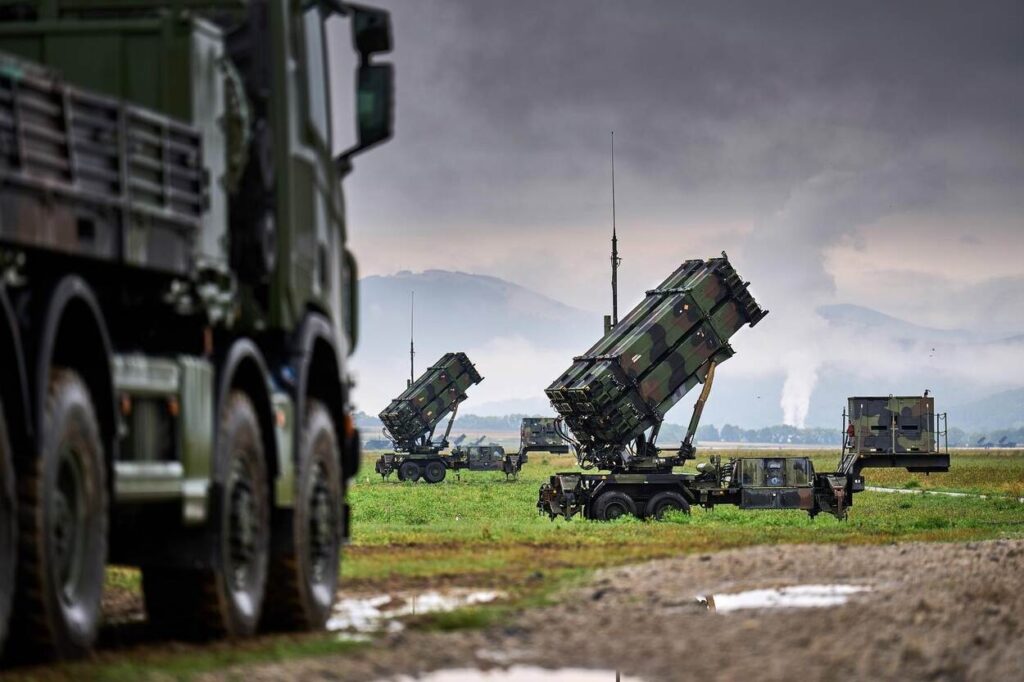
The PURL model emerges as the Biden-era military packages continue, but the Trump administration has not announced new aid commitments.
In July, President Trump and NATO Secretary General Mark Rutte unveiled the PURL framework at a Washington meeting. While not a replacement for US government aid, it keeps American weapons flowing to Ukraine via European funding.
European countries have begun increasing their own defense production, but many are turning to US manufacturers like Raytheon and Lockheed Martin to fill urgent gaps, particularly for Patriot systems and munitions.
A central question remains: Can PURL sustain Ukraine over the long term?
At the NATO summit in The Hague, member states committed to spending 5% of their GDP on defense by 2034. Much of that increased funding is expected to cover weapons bound for Ukraine, placing long-term strategic and financial responsibility squarely on European shoulders.
The next Ramstein meeting this fall may provide clarity on the scale and timeline of future deliveries. There is even consideration of holding the meeting in Ukraine — a symbolic move that would underscore NATO’s long-term support.
Meanwhile, NATO will assess costs based on Ukraine’s detailed “wish list,” which focuses heavily on air defense systems and ammunition.
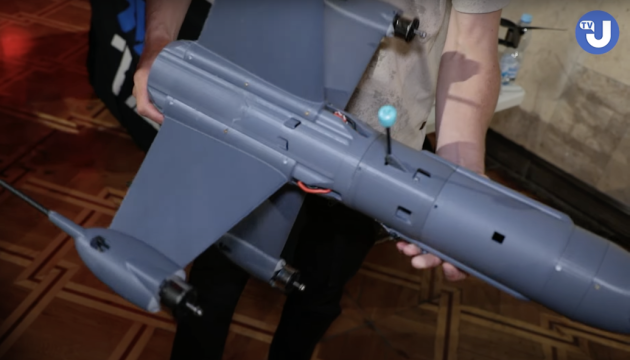
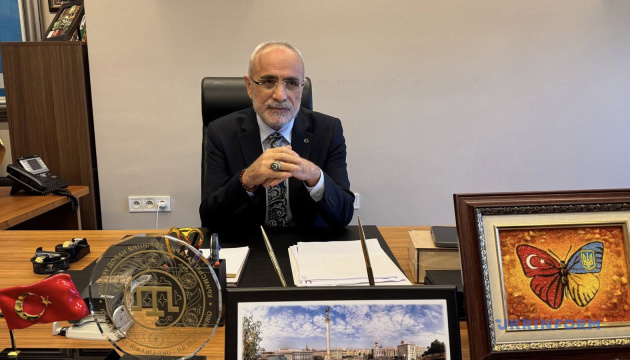
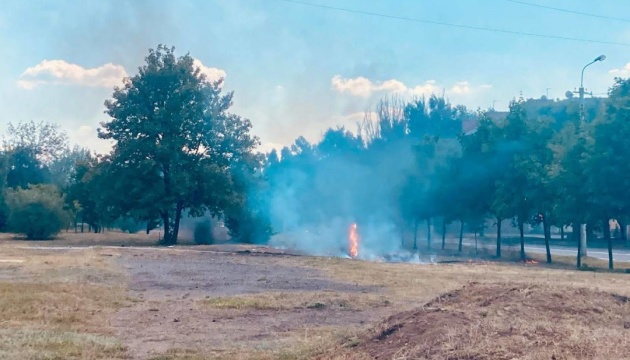

© Copyright 2025 The Associated Press. All rights reserved.
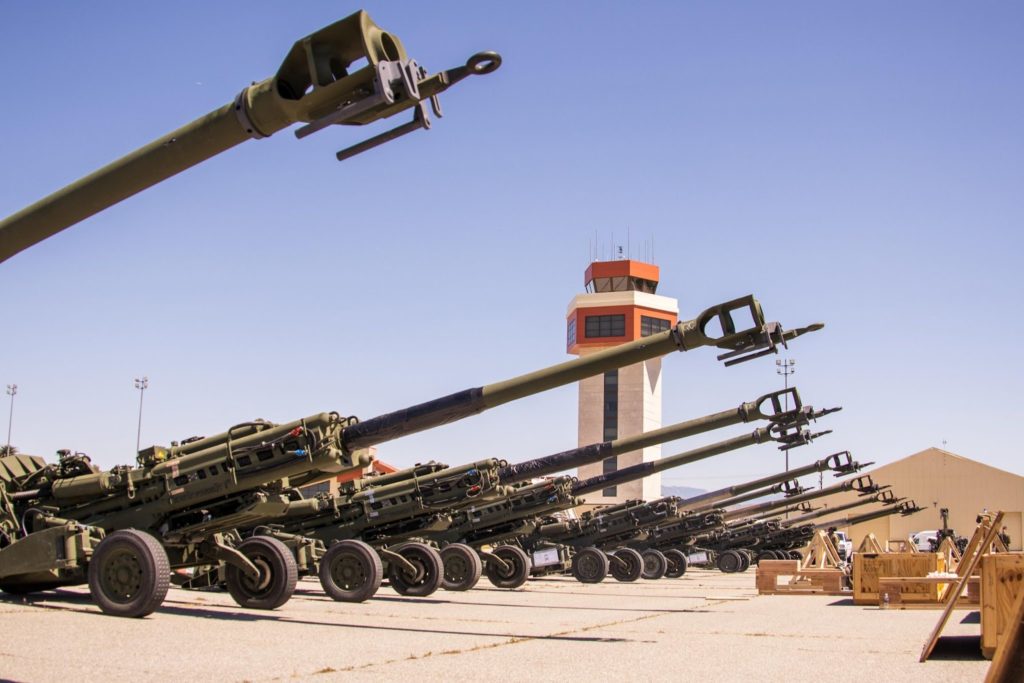
The US Department of State has approved the potential sale of repair, maintenance and logistics services for M777 howitzers to Ukraine in a deal valued at $203.5 million, according to a Pentagon press release.
The announcement comes as President Trump has indicated plans to transfer up to 17 Patriot air defense systems to Ukraine in the near future, marking a significant shift as the administration had previously paused some weapons aid for Ukraine.
The M777 howitzer is a lightweight, long-range artillery gun that improves Ukraine’s firepower and accuracy in defending against Russian forces.
The package consists of two separate contracts designed to sustain Ukraine’s artillery capabilities. The larger contract, worth $104 million, covers military equipment sales, repair services and support for M777 howitzers and related systems. UK-based BAE Systems will serve as the main contractor for this portion of the deal.
A second contract valued at $99.5 million will handle transportation and logistics services, with the Pentagon indicating the main contractor will be selected from among approved US suppliers.
The Pentagon emphasized that no offset agreements are currently part of this arrangement. Officials said the sale serves broader strategic objectives, noting that “this proposed sale will support the foreign policy and national security objectives of the United States by improving the security of a partner country that is a force for political stability and economic progress in Europe.”
The approval represents the latest in a series of military assistance measures for Ukraine. On 11 July, the US Senate Armed Services Committee approved $500 million in security assistance to Ukraine as part of the draft defense budget for fiscal year 2026.
Earlier in July, the State Department approved two additional military aid packages. The first included HAWK Phase III air defense systems and maintenance services.The second covered Bradley infantry fighting vehicles and repair services, according to Pentagon.
The M777 howitzer maintenance deal requires Congressional notification and final approval before implementation, following standard procedures for foreign military sales.

State Department spokesperson Tammie Bruce announced that Denmark, Norway, Sweden and the Netherlands will finance the delivery of American weapons to Ukraine worth more than $1 billion.
During a briefing, Bruce said Denmark, Norway and Sweden declared their decision to fund an additional package of American weapons for Ukraine worth $500 million. A day earlier, the Netherlands announced it would pay for the first package of American weapons and ammunition, including missiles for the Patriot air defense system, worth more than $500 million.
“Together, these deliveries total over US$1 billion of lifesaving, top-of-the-line American equipment that, as noted by Ambassador Whitaker, will allow Ukraine to, quote, ‘protect critical infrastructure and civilian lives while also staying in the fight until a lasting ceasefire happens’,” Bruce said.
The announcements follow recent developments in NATO’s support mechanism for Ukraine. On 4 August, the Netherlands reported about the preparation of an aid package for Ukraine under NATO’s Prioritized Ukraine Requirements List (PURL) initiative, which included components and missiles for the Patriot air defense system.
The following day, US Ambassador to NATO Matthew Whitaker said that new announcements about military aid packages for Ukraine from other countries under the PURL mechanism could appear soon.
Reuters previously reported on the new financing mechanism for military aid to Kyiv, with sources saying NATO hopes to provide Ukraine with weapons worth $10 billion through this initiative.
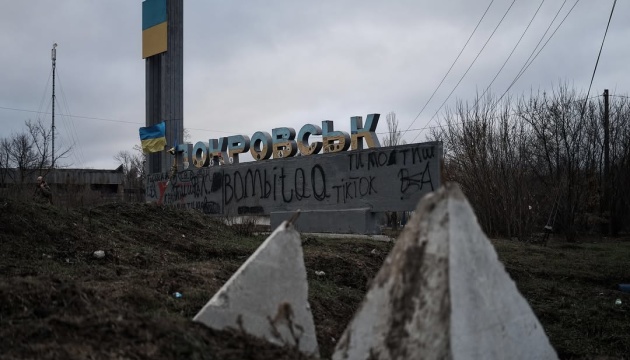

Ukraine’s Defense Forces launched the Kursk operation one year ago on 6 August 2024, resulting in over 77,000 Russian military casualties, Commander-in-Chief of the Armed Forces of Ukraine Oleksandr Syrskyi wrote on Facebook.
Ukraine’s Kursk incursion was a surprise August 2024 offensive into Russia’s Kursk Oblast, marking the largest foreign ground invasion of Russia since WWII. It initially captured significant territory but stalled by March 2025 due to a Russian counterattack.
The operation was Ukraine’s response to Russia’s preparation of a new offensive campaign in northern Slobozhanshchyna, Syrskyi said. “After careful planning of the operation, our units were able to break through enemy defenses, go deep into the Russian rear and disrupt its logistics,” he said.
At the operation’s peak, Ukrainian forces controlled up to 1,300 square kilometers of Kursk Oblast territory, forcing Russia to redeploy significant reserves and reducing pressure on other front directions. The operation prevented Russia from implementing its offensive plans and created a buffer zone that kept Sumy and Kharkiv free from attack.
Throughout the year in the Kursk grouping’s area of responsibility, Ukrainian forces inflicted significant losses on the Russian army. Russia lost over 77,000 military personnel killed and injured, including approximately 4,000 North Korean citizens, according to Syrskyi’s report.
Ukrainian forces also destroyed or damaged 7,236 units of Russian weapons and military equipment, including 11 tanks, 1,083 armored fighting vehicles, 907 artillery systems, one aircraft, three helicopters, 15 air defense systems, and 2,795 vehicles.
The operation resulted in the capture of 1,018 Russian servicemen, enabling the return of hundreds of Ukrainian soldiers, including those held captive since 2022.
The Commander-in-Chief emphasized that the Kursk offensive operation achieved most of the goals set by senior leadership.
“In fact, Russian forces was able to restore lost positions and areas only after it involved North Korean troops, significantly increased its grouping, and transferred the main intensity of the use of guided aerial bombs to Kursk,” Syrskyi said.
Russian forces only began recovering lost territory after North Korea deployed troops to support the operation and Russia intensified its use of guided bombs in the region.
As of today, Ukrainian troops maintain presence in the Glushkovsky district of Kursk Oblast, constraining part of the Russian offensive grouping.
North Korea has effectively joined Russia’s war against Ukraine by sending over 10,000 military personnel formed in Kursk Oblast and involved in combat operations. Pyongyang also supplies Russia with ammunition, artillery systems, and ballistic missiles used to shell Ukrainian cities.
South Korean intelligence previously reported that North Korea is preparing another batch of soldiers for Russia. According to CNN, North Korea may send an additional 30,000 military personnel to the war against Ukraine.


The current distance between Russian flanks around Pokrovsk has shrunk to less than 15 kilometers, military expert and former Security Service officer Ivan Stupak says.
Ukrainian forces have defended the strategic city in Donetsk Oblast for over a year. But with nearby Dobropillia now under threat, Russian troops may soon complete the encirclement. Capturing Pokrovsk would represent a major advance toward full Russian control of Donetsk, one of Moscow’s key objectives in the war.
“Their objective is clear — to capture Pokrovsk through encirclement, not through costly urban warfare. They’re trying to create a ‘cauldron,’” Stupak told Radio NV.
He noted that Russian advances began as early as August 2024, with an assault expected by September. Yet only now, a year later, has Russia come close to surrounding the city.
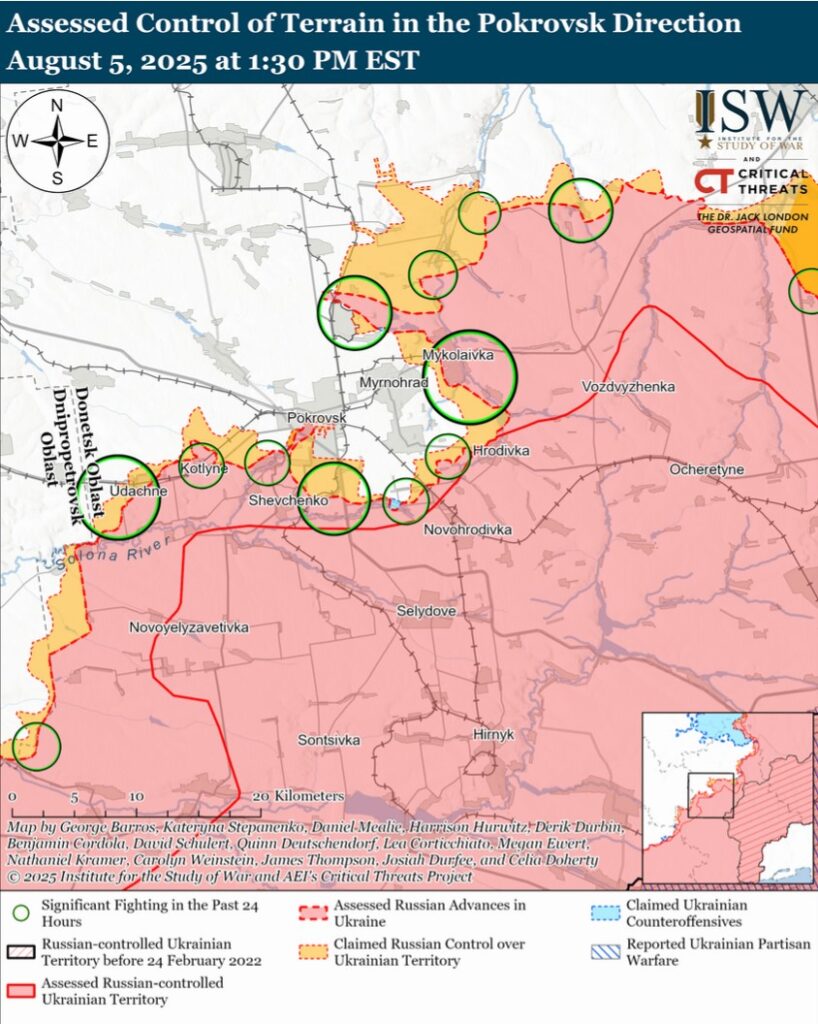
Stupak warned that if the gap between Russian positions closes further—from 15 km to under 10 kilometers—Ukrainian forces may be compelled to withdraw from Pokrovsk to prevent a catastrophic loss.
“We saw this before in Vuhledar. It could’ve been held longer, but once surrounded on three sides, our troops had to retreat urgently—sometimes abandoning equipment.
During that retreat, Russian shelling from both flanks caused heavy losses. We must avoid repeating that mistake in Pokrovsk.”
Donetsk Regional Governor Vadym Filashkin confirmed that entry into Pokrovsk is now nearly impossible due to continuous Russian shelling.
“Only 1,370 residents remain in the city. We can only access it with military escorts, and we rely on our defenders to help evacuate civilians,” he said in a national broadcast, as reported by RBC-Ukraine.
Filashkin added that no humanitarian or medical aid can be delivered. Despite the risks, municipal workers and police continue to operate inside the city to assist with evacuations.
A similar situation is unfolding in Kostiantynivka, where 8,261 residents remain under daily shelling.
According to Pokrovsk News, 1,342 people still reside in Pokrovsk, and 470 in nearby Rodynske. With evacuation routes blocked and humanitarian access cut, many civilians are fleeing on foot toward safer areas.

In late July, Commander-in-Chief Oleksandr Syrskyi confirmed that a Russian sabotage group had briefly infiltrated Pokrovsk but was quickly repelled by Ukrainian forces.
The Ukrainian General Staff rejected claims of full encirclement, stating that troops still control defensive lines around the Pokrovsk–Myrnohrad urban zone and that measures have been taken to reinforce the sector.
According to DeepState analysts, Russian forces are now concentrating efforts on Rodynske, a town positioned behind Myrnohrad and Pokrovsk. Capturing Rodynske would open a new axis of attack, potentially accelerating the encirclement.


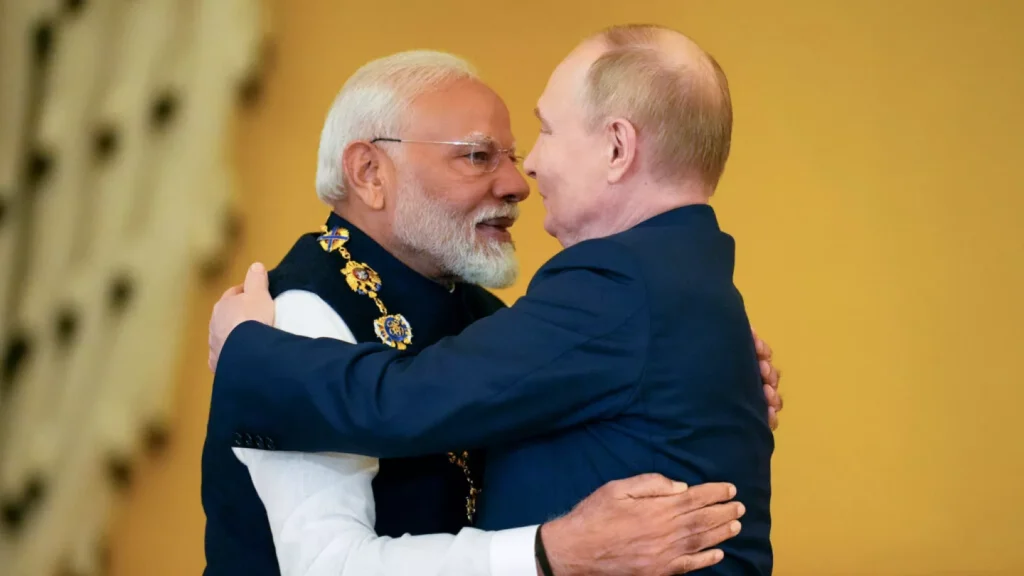
In a notable editorial convergence, The Telegraph has published two pieces suggesting a striking possibility: India may hold the key to ending the war in Ukraine.
As peace negotiations remain stalled, US President Donald Trump is pursuing a new strategy — one that aims to cut off Russia’s oil income, the financial lifeline that allows Moscow to continue its military campaign. The logic is simple but consequential: as long as countries keep buying Russian oil, Russia can keep funding its war. And two of the biggest buyers are India and China.
One Telegraph report, by Senior Foreign Correspondent Adrian Blomfield and Data Journalist Meike Eijsberg, details Trump’s sharp pivot. After months of shielding Putin from serious consequences, the president is now threatening 100% tariffs on nations that continue to purchase Russian oil — a move aimed squarely at throttling Russia’s war economy.
Yet despite China being Russia’s top energy customer, Trump has refrained from criticizing Beijing. Instead, he has singled out India, the second-largest buyer.
“They’re fuelling the war machine, and if they’re going to do that, then I’m not happy,” Trump told CNBC, vowing further penalties for Delhi’s oil purchases.
According to the Global Trade Research Initiative, India’s Russian oil imports surged from near-zero pre-war to 2.15 million barrels per day by mid-2023, now making up around 45% of its total supply. That translated to $51 billion in revenues for Russia last year alone.
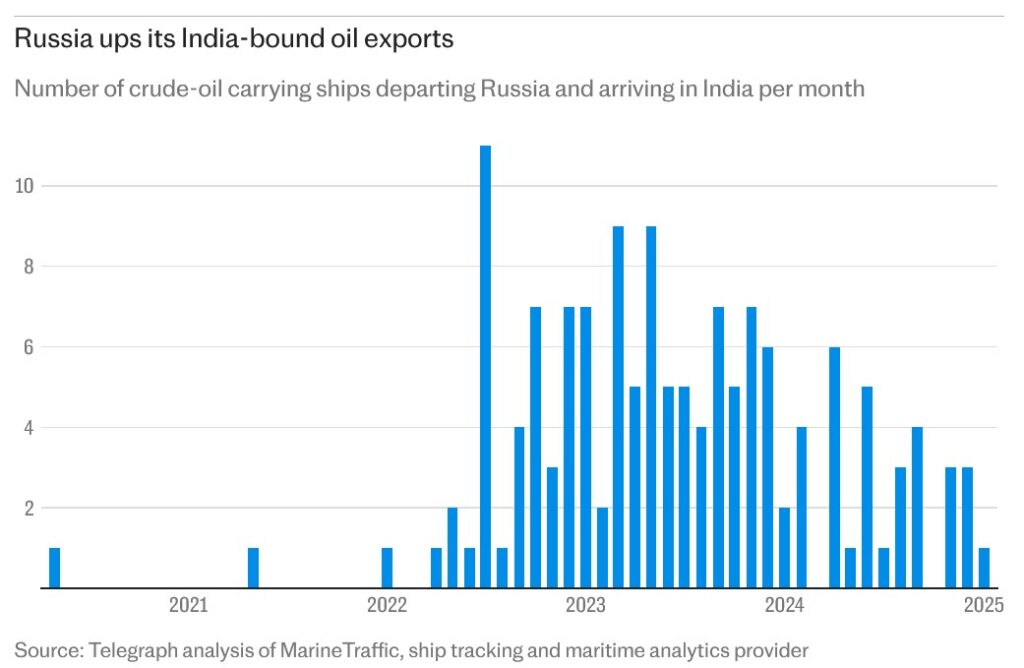
In a separate opinion column, Colonel Tim Collins, former British Army officer, builds on this geopolitical moment. He argues that India’s decades-old strategic relationship with Russia — forged during the Cold War — is coming under pressure from new realities, particularly China’s growing regional dominance.
“India sees itself increasingly surrounded by potential enemies,” Collins writes, citing China’s rising influence in Sri Lanka, Bangladesh, and Pakistan, including military cooperation and infrastructure encroachment.
India’s military, still heavily reliant on Russian-made equipment, has been tested — most recently in the brief “100-hour war” with Pakistan. According to Collins, that conflict exposed drone capability gaps and other vulnerabilities, many linked to Chinese support for Pakistan.
These military setbacks have pushed India to diversify its defense partnerships, turning to US, French, and Israeli suppliers while accelerating domestic arms production. Yet its longstanding relationship with Russia has made any meaningful cooperation with Ukraine politically off-limits.

Taken together, The Telegraph’s reporting outlines a core question: Can India keep buying Russian oil while preparing for a future aligned with Western powers?
India’s balancing act is becoming harder. As a member of The Quad (with the US, Japan, and Australia), India is seen as a critical counterweight to China. Yet its energy dependence on Russia has, in Trump’s view, become a liability to the West — and a lifeline to Putin.
“If energy goes down enough, Putin is going to stop killing people,” Trump said last week. “If you get energy down another $10 a barrel, he’s going to have no choice.”
Despite this, Trump has avoided confronting China, which buys even more Russian oil — about 47% of Moscow’s exports. Instead, The Telegraph suggests India has become the central target of Trump’s pressure campaign — and potentially a decisive lever in ending the war.
According to both reports, the direction of travel may ultimately depend on Prime Minister Narendra Modi’s calculation — between old loyalties to Moscow and new strategic needs.
“Perhaps a Trump charm offensive may be more decisive in the short term as opposed to any form of coercion or strong words,” Collins writes.
At stake is not just the global oil market or India’s own security posture, but possibly the trajectory of the war in Ukraine itself.
As The Telegraph implicitly argues, if India cuts or significantly reduces Russian oil imports — whether due to US pressure, regional insecurity, or long-term strategic shifts — the financial strain on the Kremlin could force a change in Putin’s calculus.
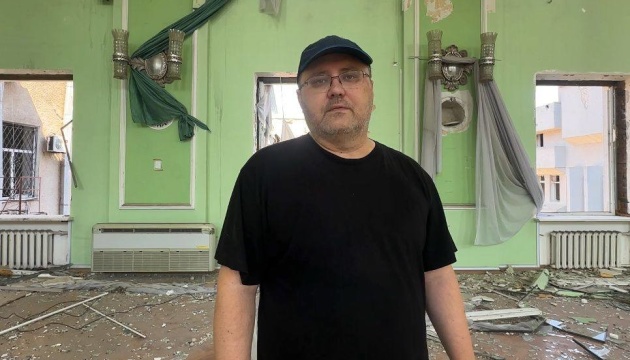
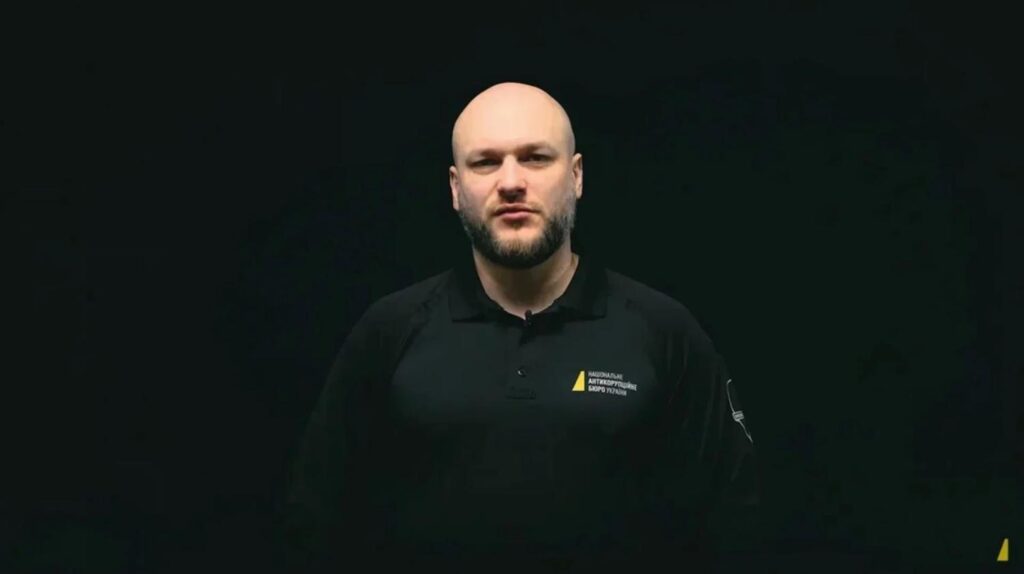
Ukraine’s Cabinet has finally appointed the anti-corruption detective Oleksandr Tsyvinskyi as director of the Bureau of Economic Security (BEB), ending weeks of deadlock that drew international criticism and jeopardized IMF funding.
Tsyvinskyi won the official selection process earlier in July, receiving unanimous support from the commission. Yet the appointment stalled amid unsubstantiated security concerns — a delay that risked derailing up to $2.3 billion financial aid.
Under Ukrainian law, the Cabinet had ten working days to formalize the appointment.
Politicians chose obstruction instead.
Tsyvinskyi finally got his job today after a month-long political standoff exposed how Ukraine’s reform process works behind closed doors. The appointment came only after mounting pressure from Western donors who clarified that continued delays could jeopardize billions in aid.
Ukraine’s $15.6 billion IMF loan program included a 31 July deadline to name a new BEB director.
Missing that deadline by a week likely won’t affect the next aid tranche — the IMF routinely grants extensions for structural benchmarks — but the prolonged obstruction damaged Ukraine’s credibility with international partners.
Tsyvinskyi represents exactly what Western donors hoped to build in Ukraine. The PhD holder spent nearly a decade at Ukraine’s National Anti-Corruption Bureau, methodically building cases against untouchable figures like ex-MP Serhiy Pashynskyi, who was charged with embezzling millions in oil products.
In June, a six-member selection commission chose him unanimously, with the three international experts whose votes were decisive under Ukrainian law all supporting his candidacy. The transparent competition was designed specifically to prevent political interference.
The Bureau of Economic Security threatens powerful interests by design. Created in 2021 to replace Ukraine’s corrupt tax police, it investigates economic crimes that intersect with business networks and political patronage.
For example, in 2023, BEB detectives uncovered fuel-smuggling networks worth $29 million and counterfeit tobacco operations that cost the state $38 million.
These are precisely the cases that make politicians with business ties uncomfortable.
Officials initially leaked concerns about Tsyvinskyi’s father, a Russian citizen living in Russia. The Security Service of Ukraine demolished this excuse, with Ukrainian online newspaper Babel reporting that the SBU confirmed no legal reasons existed to block his appointment.
The double standard was obvious. Russian-born General Oleksandr Syrskyi, Ukraine’s commander-in-chief, has close relatives in Russia — yet it’s never been an issue. Tsyvinskyi, meanwhile, told reporters he hadn’t spoken to his father in over a decade.
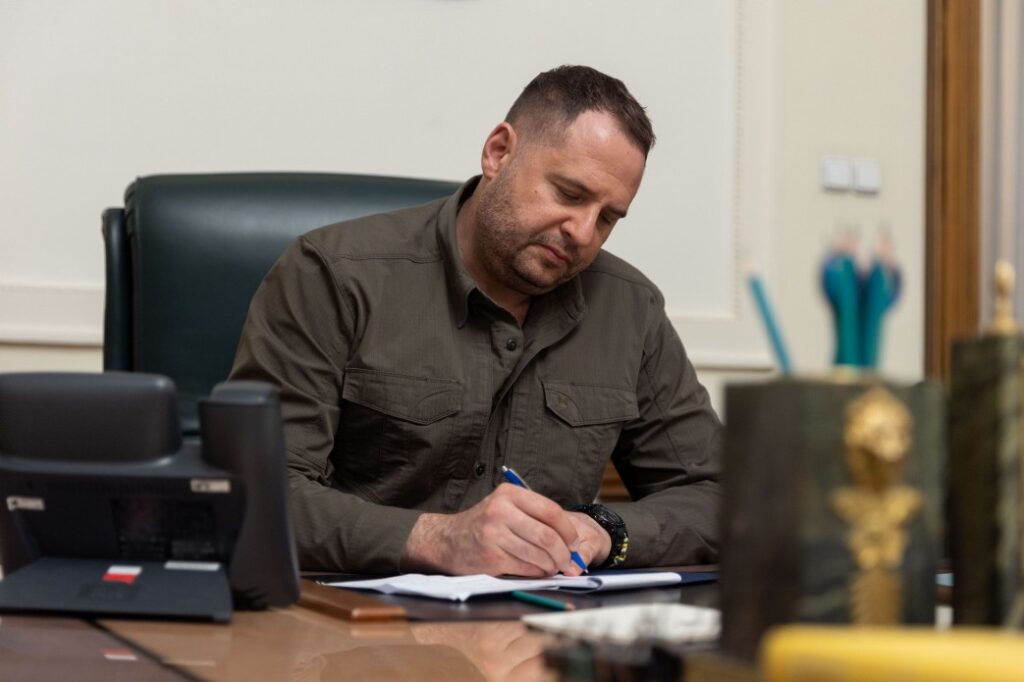
The delay wasn’t random bureaucracy. It came amid broader tensions over control of anti-corruption institutions, with Andriy Yermak, head of the Office of the President (pictured), steadily expanding his influence over personnel policy. Prime Minister Yuliia Svyrydenko, his close ally, chairs the Cabinet, which refused to sign Tsyvinskyi’s appointment within the legal deadline.
The timing was suspicious. Around the same time, the government tried — and failed — to place the National Anti-Corruption Bureau (NABU) and Specialised Anti-Corruption Prosecutor’s Office under tighter executive control. That rollback also came only after intense international pressure.
By mid-July, Ukrainian business groups warned that Tsyvinskyi’s limbo status could disrupt the agency’s reforms and create problems with international partners. Civil society groups called it a procedural violation.
Tsyvinskyi abandoned his reserved professional stance and went public, accusing officials of using “manipulative” tactics to sabotage his candidacy.
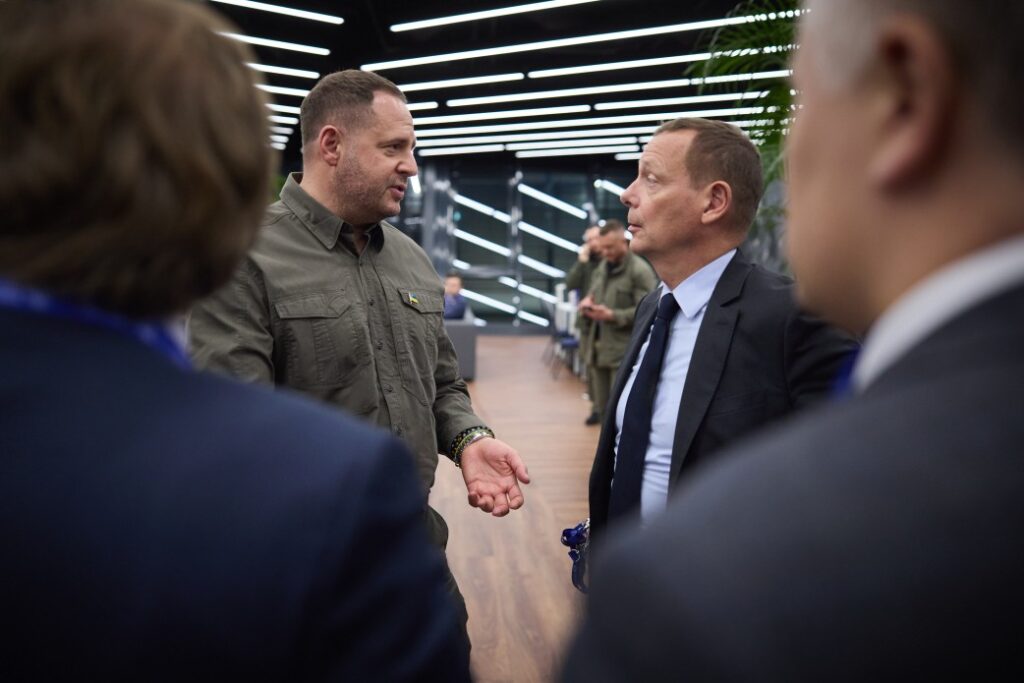
While Ukraine’s Cabinet dodged questions, pressure from international donors ultimately forced the appointment.
The International Monetary Fund and European Commission had backed the competitive selection process as a core pillar of Ukraine’s anti-corruption reforms. With billions in aid flowing through government systems, donor trust became a concrete factor in political calculations.
Ukraine’s IMF deal includes $2.3 billion in aid this year — but only if Kyiv meets its structural reform milestones.
According to the Kyiv Independent, Western donors viewed the delay as a test of Kyiv’s credibility, with direct implications for financial support. More than 60 civil society organizations and business groups issued open letters demanding Tsyvinskyi’s appointment.
“The reform of the BEB is vital for Ukraine’s business climate, investment prospects, and progress toward Euro-Atlantic integration,” the G7 said in a public statement.
The message was clear by late July: continued obstruction could jeopardize that support. The government began signaling that Tsyvinskyi might be appointed in early August, after he agreed to take a polygraph test.
Tsyvinskyi passed the test on 5 August. Of course, he did — the whole exercise was face-saving theater. The mounting pressure had worked.
The Tsyvinskyi case wasn’t isolated. Oleksandr Danyliuk, a respected former Finance Minister, applied to head the Bureau of Economic Security in 2021 but was disqualified on technical grounds — officials said he couldn’t provide a diploma in the right specialty.
The irony was stark: a former minister with extensive economic expertise was blocked from leading a financial crimes agency over paperwork.
These cases reveal a pattern. When qualified candidates can’t be trusted to follow informal instructions, the system finds ways to exclude them — until international pressure becomes too strong to ignore.
Tsyvinskyi’s appointment resolves the immediate crisis but raises more intricate questions. Will he be allowed to operate independently, or will the government try to constrain his work behind closed doors? Will the BEB’s long-delayed investigations finally start moving?
Much depends on whether Western stakeholders maintain pressure. The IMF’s next review mission looms, and Ukraine’s EU accession talks are underway. With $2.3 billion on the line, the question is whether Kyiv’s leadership truly accepts that institutional independence isn’t a bargaining chip.
The fight over his appointment showed how fragile these reforms remain. Even amid war, even with international oversight, even with transparent procedures, political interference can still derail the process.
For Tsyvinskyi, the job is no longer just about combating economic crime. It’s about whether merit can survive politics in Ukraine’s reform landscape — and whether a qualified investigator can investigate when powerful interests prefer he doesn’t.
The real test begins now.

Steve Witkoff – the president’s international diplomatic Mr Fixit – has failed to bring peace to the Middle East or deliver on Trump’s boast that he would end the war in Ukraine in 24 hours, writes world affairs editor Sam Kiley

© RIA_Kremlinpool/Telegram